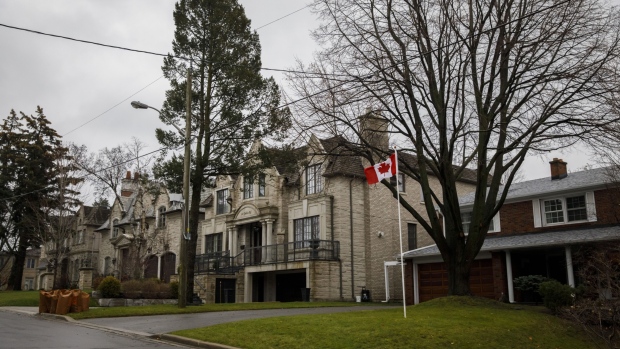
Angry neighbours block housing that Canada's cities badly need
BNN Bloomberg
A proposal to turn one house into two is all it took to transform the quiet Toronto neighbourhood of St. Andrew-Windfields into a battlefield.
A proposal to turn one house into two is all it took to transform the quiet Toronto neighborhood of St. Andrew-Windfields into a battlefield.
Neighbors flooded local authorities with letters pleading to be saved from the “lot division nightmare,” denouncing it in all caps and insinuating the dangers it could pose to local school children. They hired a lawyer, commissioned a planning study, and enlisted their city councilor to stop the project. The crux of the opposition was that homes in St. Andrew-Windfields are large, and the two that Farrokh Zahedi and his wife proposed to build in place of their current one were small. This, the neighbors charged, would negatively alter the neighborhood’s character.
That such a minor thing -- the addition of a single house in a city of nearly 7 million people -- could cause such an uproar illustrates why Canada’s housing market, already one of the world’s most expensive, is almost certain to get even pricier in 2022 and beyond. The country’s population is booming. It’s growing at twice the rate of the U.S. and faster than any other Group of Seven nation. Most newcomers land in a handful of large cities, and Prime Minister Justin Trudeau’s government is promising to boost immigration levels even higher. Canada simply needs more houses. But local governments are often too feeble to overcome opposition to even minor building projects such as the Zahedis’.
“All these giant homes of 6,000 square feet were ganging up on somebody who wants to build 3,500 square feet,” Zahedi, 77, said in an interview in his living room. At an appeal to municipal authorities in September, the Zahedis’ representatives pointed out that their plan to sell one of the proposed homes while living in the other would increase Toronto’s housing stock, which, modest as it was, was the kind of thing you wanted to do in a shortage. The proposal was rejected. “We’ve got a major issue regarding housing,” Zahedi said on reflection.
The roots of Canada’s housing dysfunction lie in provincial and city governments that don’t have a strategy for dealing with the immigrant influx and are all too easily swayed by residents’ groups opposing greater density. The core city of Toronto, which is denser than suburbs, still has a population density is less than half of New York City’s.
Mike Moffatt, an economist at Ontario’s Western University, projects that 1 million new homes will be needed over the next decade in Ontario alone. Most experts agree hitting that number will mean major reforms to planning rules. Yet proposals to allow denser housing like low-rise apartments in more of Toronto and Vancouver -- Canada’s two most expensive cities for housing -- are still in the consultation phase, with no recommendations for action expected until at least the middle of next year.
